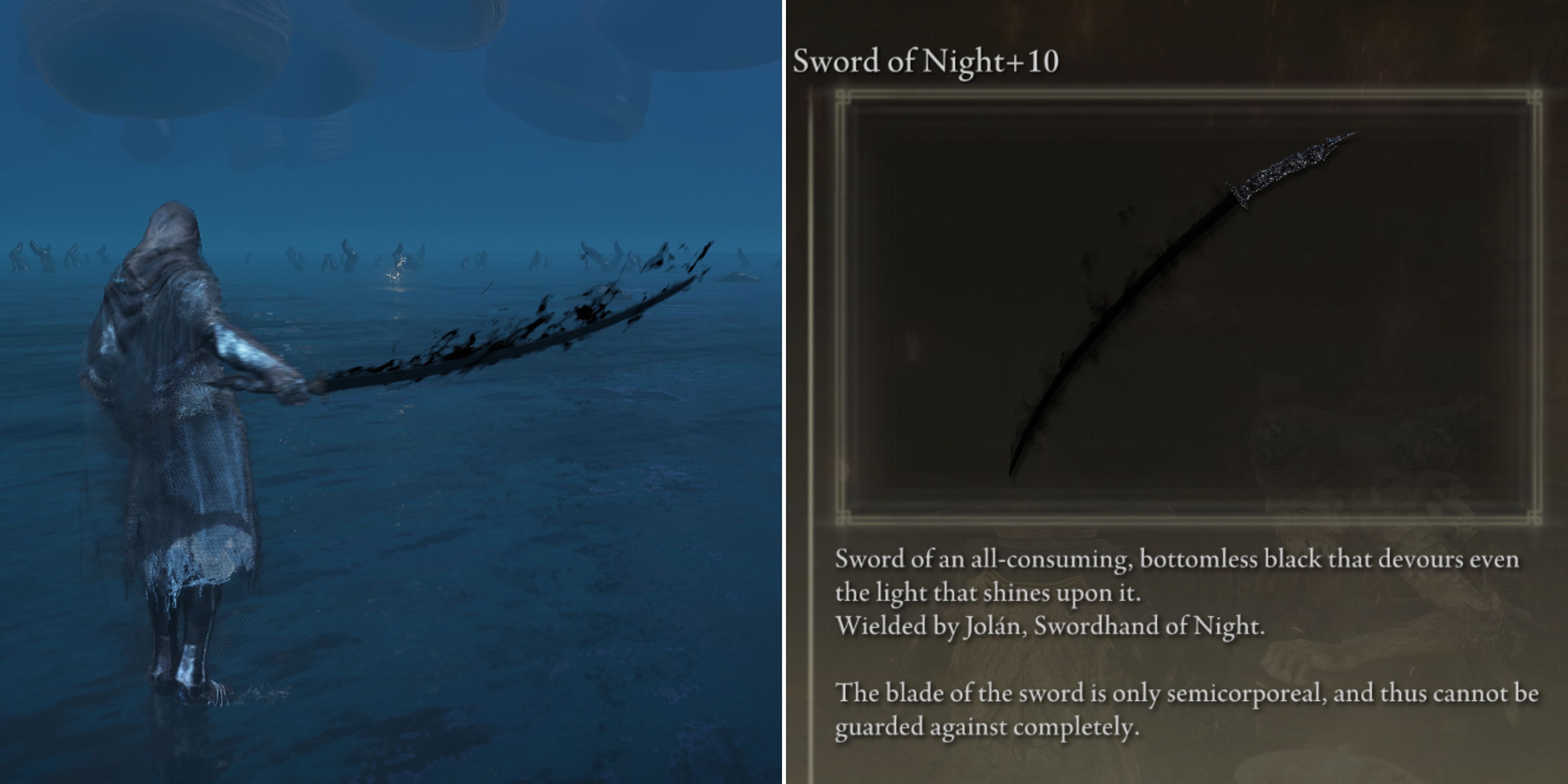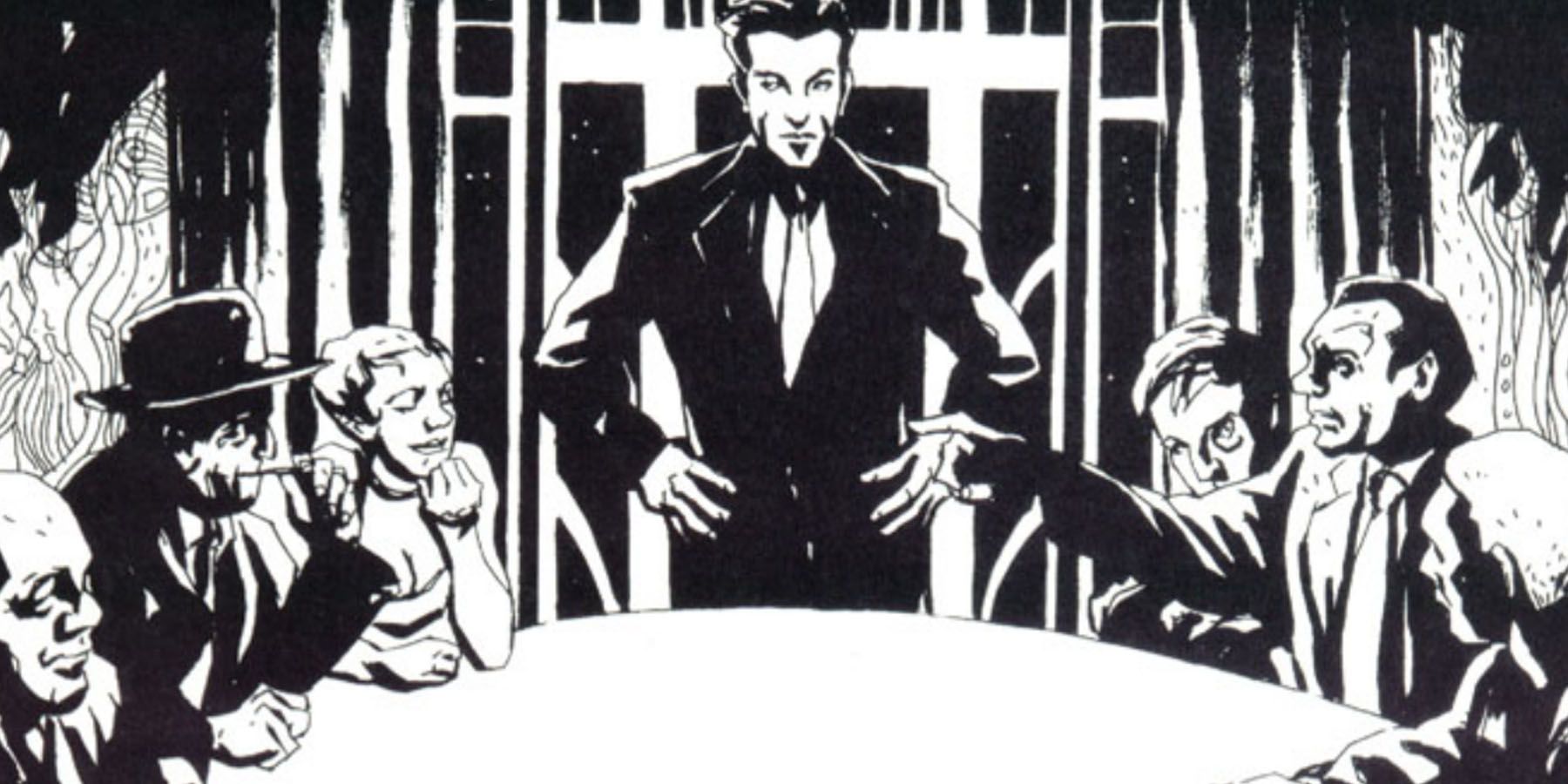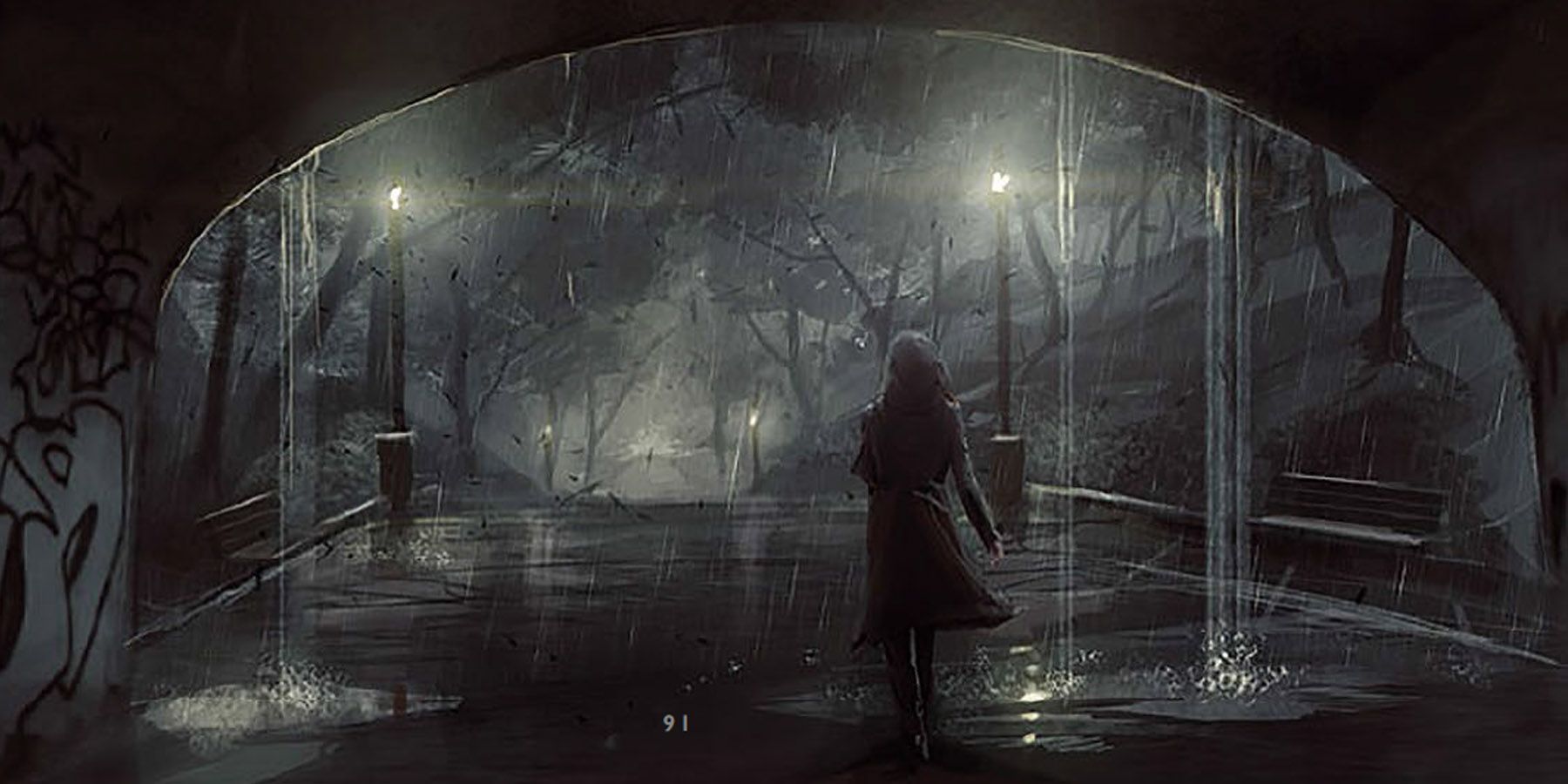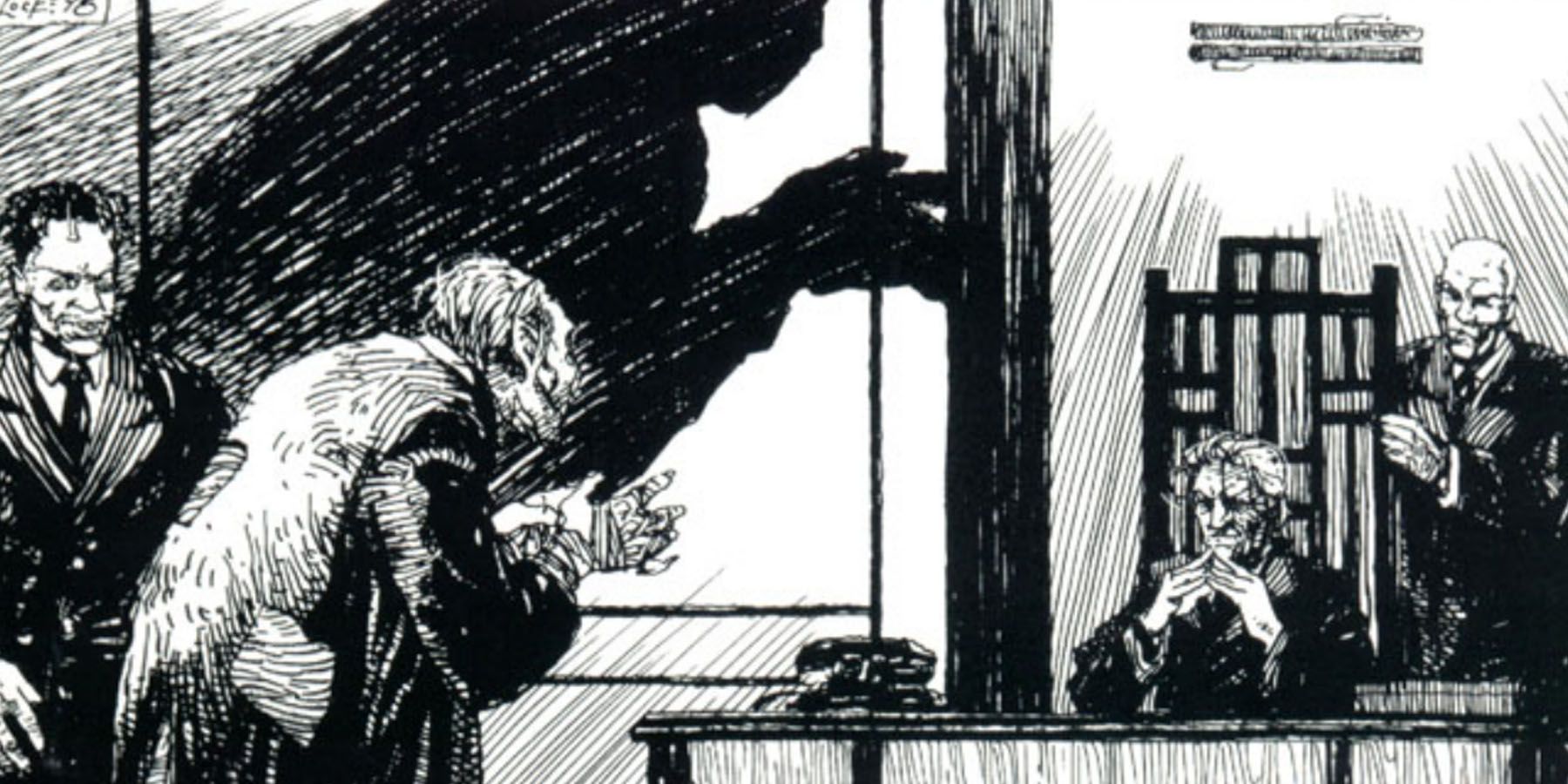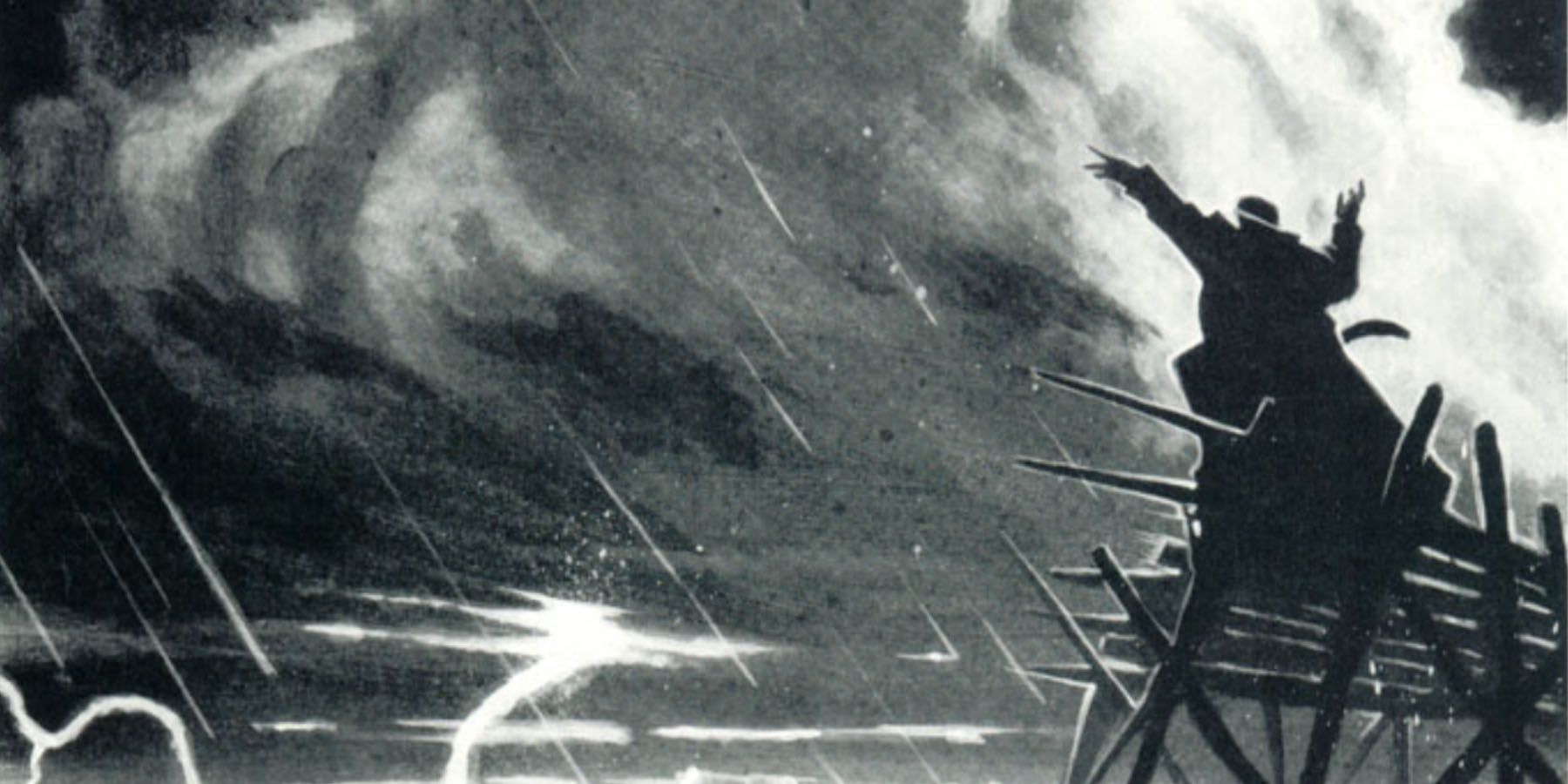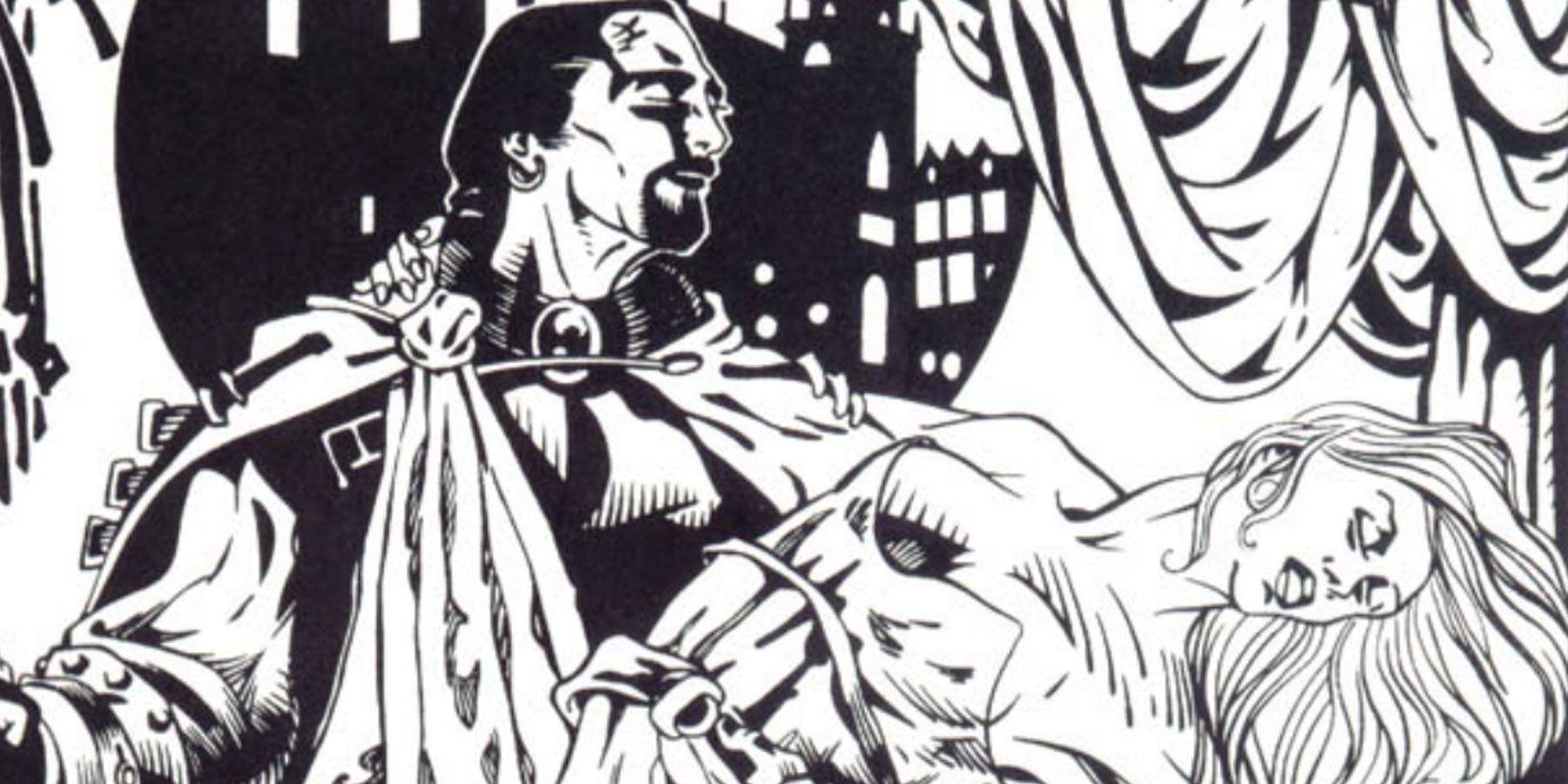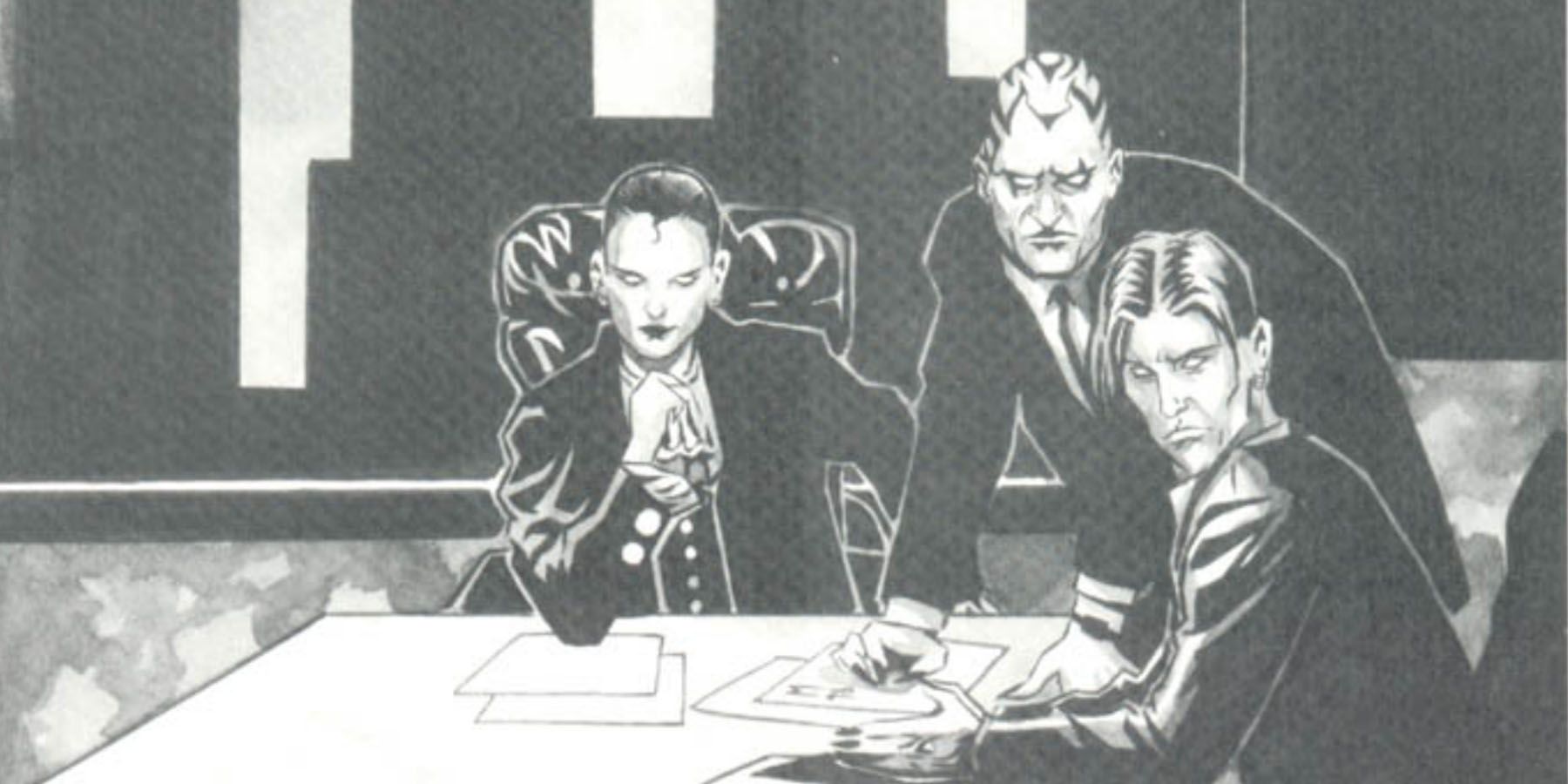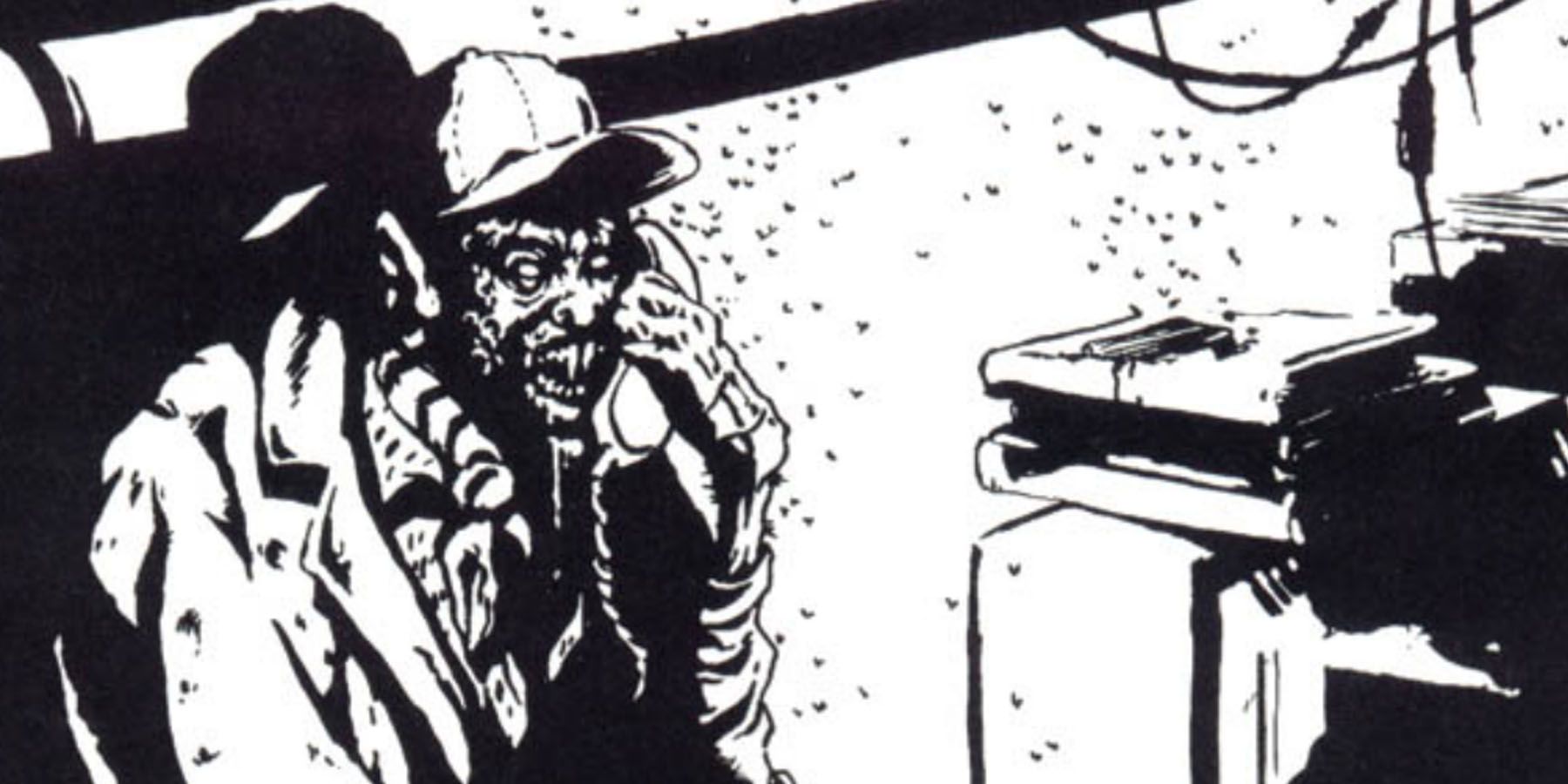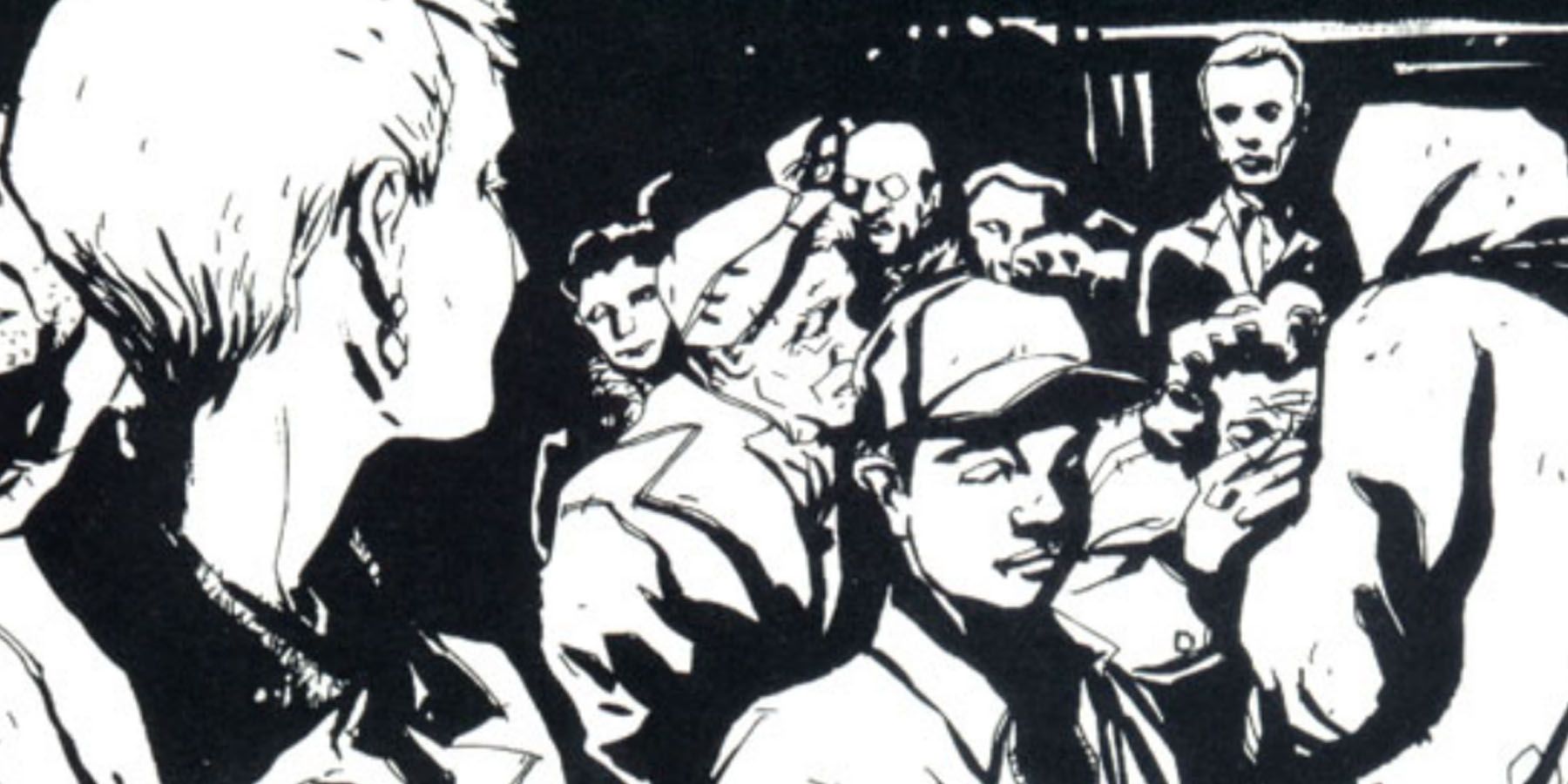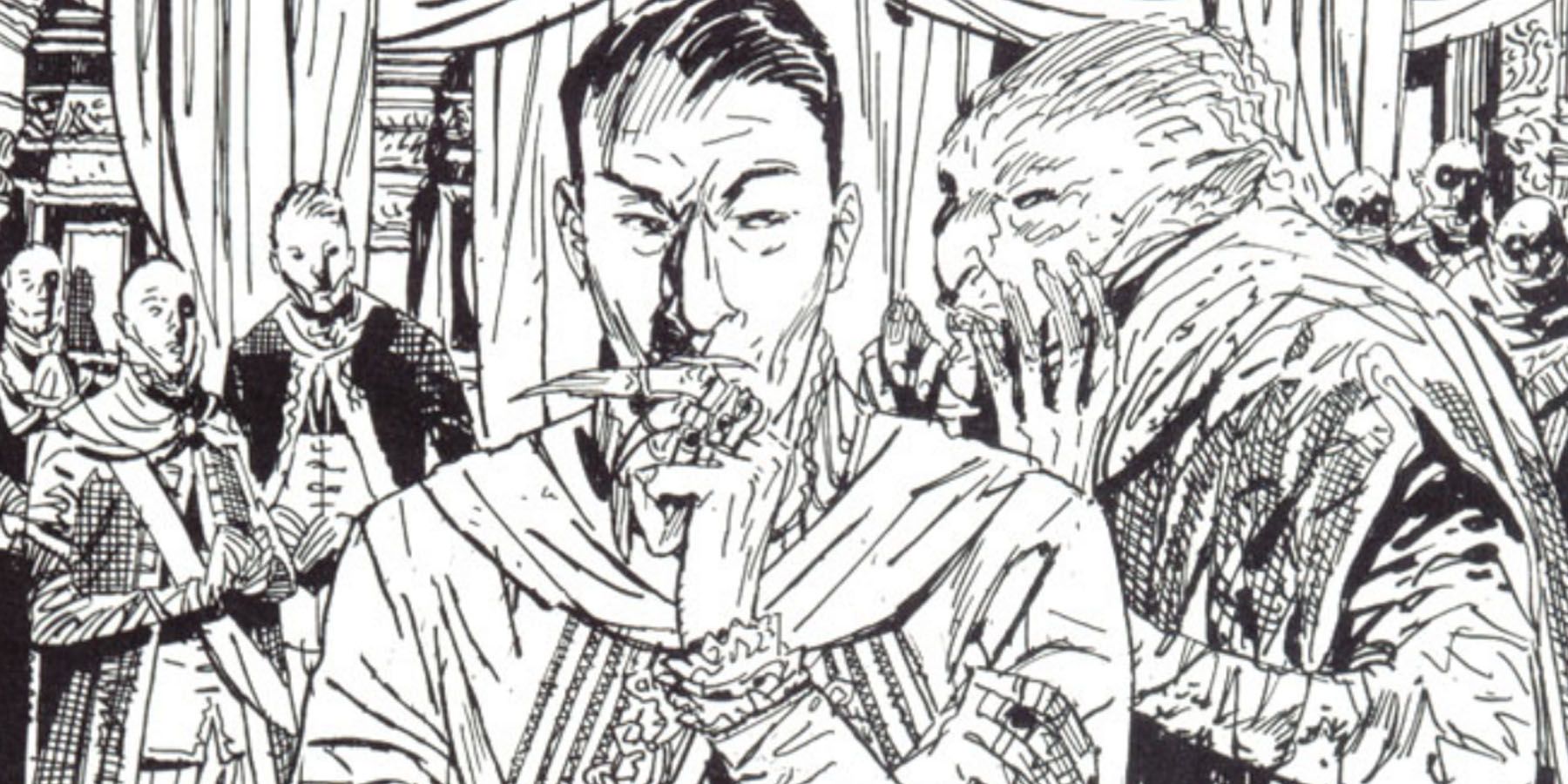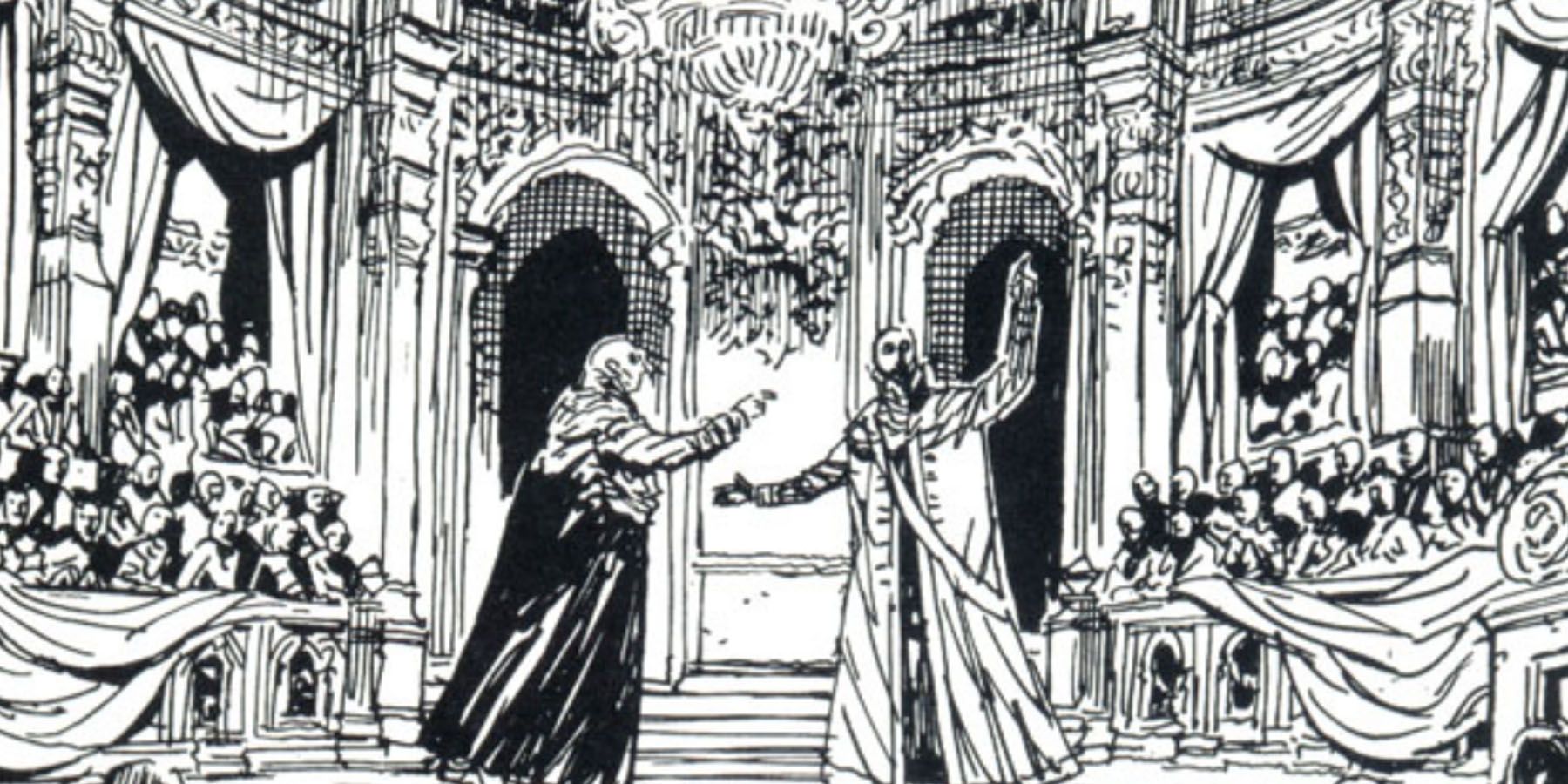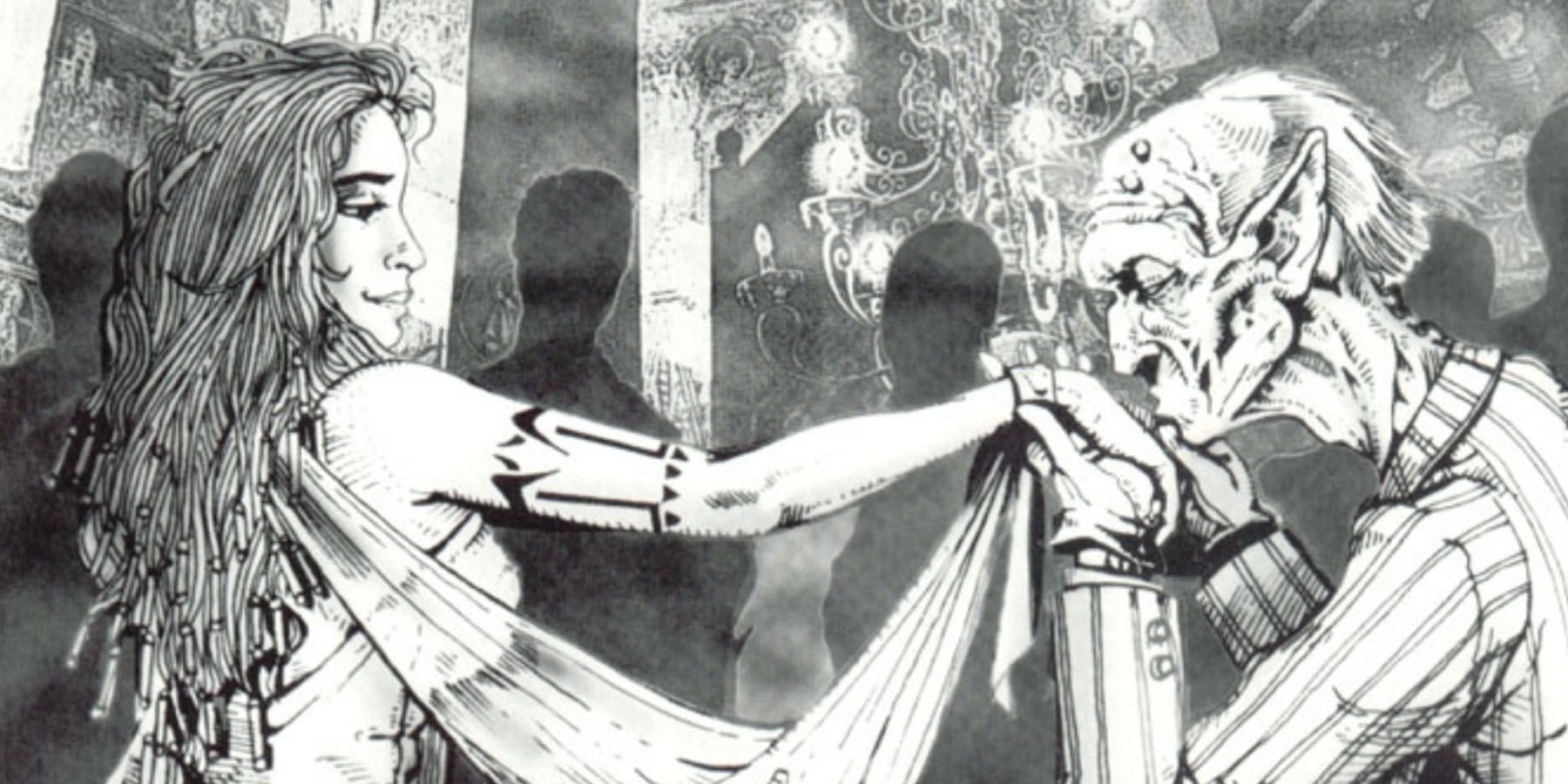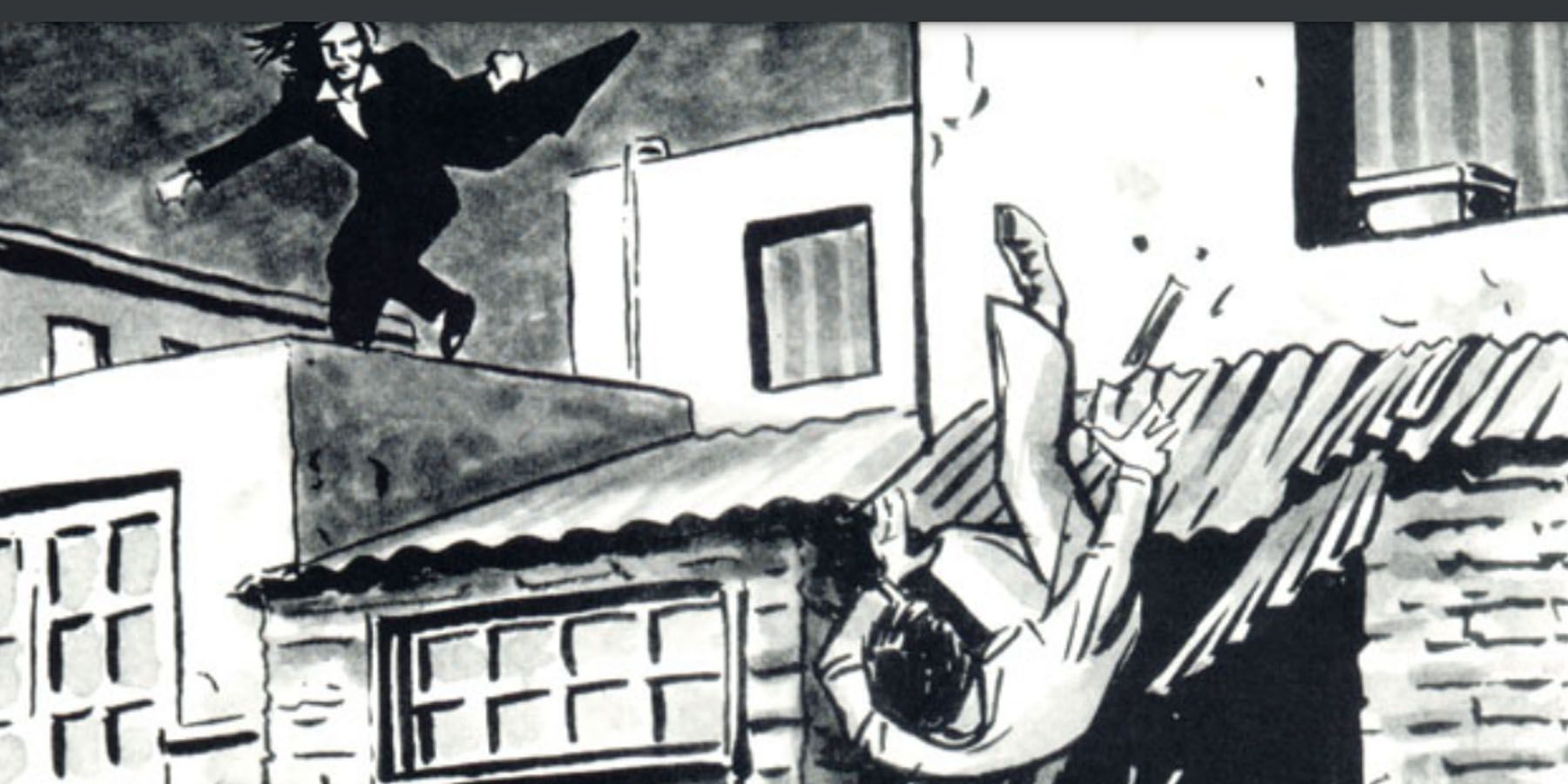Fans of supernatural horror can enter the World of Darkness as a vampire in Vampire: The Masquerade. In this TTRPG, Kindred or vampires fortunate enough to fall under the guidance of the Camarilla Sect are expected to uphold the Masquerade, or the illusion of appearing human, in order to keep their unlives safe and without that much of a fuss.
However, this particular Sect is rife with intrigue and politicking. Kindred of Vampire: The Masquerade in the Camarilla usually follow the Sect with a personal agenda in mind. And fans eager to play a game like Sins Of The Sires may need to understand why the Camarilla, perhaps the most “formal” representation of an orderly vampiric society, isn’t as peaceful as it makes itself out to be.
Updated September 16, 2023, by Rhenn Taguiam: With players now starting as a Vampire Elder in Vampire: The Masquerade - Bloodlines 2, their improved powerset plays a bigger role in the fate of Seattle in the World of Darkness. Should players decide to uphold the status quo, helping the Camarilla secure the Emerald City may be the route to take in the Bloodlines sequel. However, before players commit to the Ivory Tower, they may want to learn more. It can behoove players to know what being in the Camarilla is about, their counterparts in the Middle East, and a recent crisis in Berlin that doesn’t bode well to the Sect’s perceived control over Kindred society.
13 A Primer On The Camarilla
Perhaps the most recognizable Kindred Sect, the Camarilla boasts the most influence and order in vampire society. This semblance of order doesn’t necessarily mean the Camarilla is safe, however. The Ivory Tower is a structure perpetuated by Kindred Elders to maintain control over those below them. Such a control is exerted in the reinforcement of the Masquerade, a method to force other vampires to bend the knee under the guise of having to “blend in with humans.”
As a member of the Camarilla, Kindred are expected to uphold the Traditions to their utmost ability. Unlike the indulgence of the Sabbat, their Beast is to be kept at bay, and they should conform to the rules of their city and their Prince or risk retaliation. However, despite the iron grip Princes have in their cities, other parties — players included — are more than capable of partaking in schemes and efforts to undermine the current rulers of the city. Being a part of the Ivory Tower means having to watch one’s back against enemies from both inside and outside the organization.
12 Born Out Of Necessity
It’s easy to assume that a Sect like the Camarilla was born out of a need for older vampires to lord over their children. However, the Sect was actually formed out of necessity. Due to the First Inquisition and the resulting Anarch Revolt posing danger towards Kindred territories in Europe, it was a fateful meeting in 1394 that created a unified front to group vampires together.
Despite resistance from the likes of the Brujah Tyler, the Camarilla was formed, and its Traditions sought to protect and hide Kindred society from the prying eyes of mortals. In this Convention of Thorns, Anarchs aren’t to be harmed unless they endangered the Masquerade, and the Assamites were forced to cease in their bloodlust through a Tremere curse.
11 The 500-Year War With The Sabbat
It’s actually around the formation of the Camarilla that its fiercest rival, the Sabbat, was formed. Beginning as anarchs, disgust on the part of the Lasombra and Tzimisce led them to storm out of the Convention of Thorns alongside other malcontents. Their fierce attacks on the local populace had them dubbed “the sabbat,” which they took as their name. Since then, much of the Sabbat had left Europe and went to the New World.
While the Camarilla slowly consolidated a lot of its power in Europe, the idea of seeking new territory for their vampire neonates became attractive as well. It’s thanks to the Sabbat civil wars that the Camarilla gained opportunities to “steal” some cities in America, while the War of 1812 had the Camarilla lose some of their holdings just the same. Conflicts within the Camarilla arose in major conflicts, too, especially in world war where the Inner Circle didn’t participate, unlike elders that sided with either Axis or Allied powers.
10 The Curious Case Of The Antediluvians & Gehenna
Given the age of most elders in the Camarilla, it’s easy to explain why a lot of them don’t believe in the Antediluvians and the idea of Gehenna: they simply haven’t been there while they existed. While elders and other Kindred may have been educated about Caine, the Camarilla makes it a point to suppress and punish any talk about the Antediluvians and Gehenna, to the point of not actively preparing for the conflict.
Some Sects, like the Sabbat, think that Antediluvians themselves might be pulling the strings behind the Camarilla. It’s also theorized that the Camarilla aren’t making any preparations as they believe the rising Antediluvians may favor the more orderly and elitist Camarilla.
9 Shifting Sides In The Modern Days
While modern depictions of the Camarilla have “unofficial” differentiation between Clans as High Clans (Ventrue, Toreador, Tremere) and Low Clans (Brujah, Nosferatu, Malkavians, Gangrel), it’s not uncommon for modern Kindred to switch sides — sometimes, Clan-wide. For instance, not only did the Gangrel suddenly withdraw membership from the Camarilla, but Archon Theo Bell’s defection to the Anarchs motivated a lot of Brujah to follow suit — and sometimes even kill their respective Princes along the way.
On the other end, the rise of and fear towards Banu Haqim elder Ur-Shulgi forced a mass defection of the independent Banu Haqim into the Camarilla. And Giangaleazzo, one of the signatories of the Sabbat’s Code of Milan, made a surprise defection from the Sect and into the Ivory Tower, bringing half of the Lasombra with him.
8 The Fall Of Berlin
While the Camarilla’s strict enforcement of the Masquerade led to fairly stable cities under their rule, Berlin was a disastrous example of how constant infighting could inevitably lead to an Anarch victory. Throughout ancient times and after World War II, Berlin was mostly ruled by a fragile truce between the merciless Gustav Breidenstein of the East, and his more lenient childer, Wilhelm Waldburg of the West.
Unfortunately, various circumstances in modern times led to Camarilla Berlin’s eventual downfall at the hands of the Anarchs. These included someone deposing the ruling Waldburg, a mysterious Blood Curse, as well as power struggles involving an impending Sabbat invasion, an Anarch gang, independent ghouls, and sleeping Methuselah. After a full-fledged Anarch Revolt happened post-Conclave of Prague, the deposer Prince Abraham Wolff was devoured in the middle of the street before Berlin fell into Anarch control.
7 The Age Of Technology and the Second Inquisition
When the NSA cracked the SchreckNet computer network, it revealed a “hidden world” of vampires to intelligence agencies, who then formed a united secret front to combat the “blankbody” threat. Dubbed by Kindred as the Second Inquisition, these agencies stormed the Tremere’s central Vienna Chantry in 2008 and presumably destroyed not just it, but also the Clan’s central leadership. This forced the Camarilla to not just dismantle SchreckNET, but ban all online communication among Kindred.
On the other side of the world, a mysterious “Beckoning” is forcing elders to go into the Middle East, apparently to “wage war” against the Sabbat. In retaliation, the Sabbat has begun “hunting” down Antediluvians, with the other Camarilla left in their cities mustering forces to defend the sleeping grounds of their Methuselahs should Sabbat think of them as Antediluvian burial grounds.
6 Traditions Over Anything Else
What perhaps makes the Camarilla distinct compared to other Sects is how they uphold their Traditions, as decided in the Convention of Thorns. Six Traditions exist, representing various aspects of “behavior” expected of vampires and other Camarilla members:
- Masquerade: Most important is the First Tradition (Masquerade), which means hiding the existence of vampires.
- Domain: The Second Tradition (Domain) establishes a vampire’s rulership over their domain.
- Progeny: The Third Tradition (Progeny) implies a permission-first basis to Embrace others,
- Accounting: The Fourth Tradition (Accounting) puts the responsibility of one’s childer to themselves.
- Hospitality: The Fifth Tradition (Hospitality) enforces the Prince’s authority in a city.
- Destruction: The Sixth Tradition (Destruction) upholds that only elders can call for the destruction of another Kindred.
5 The Decrepit Ivory Tower
A lot of neonates and ancillae look at the Ivory Tower both with disdain and a sheer desire to rise within its ranks. This hatred is well-placed, considering that the systems of the Camarilla are in place precisely to make sure elders keep their power.
Some of the Traditions enforce this power early on, with rules dictating not just how sires are in charge of their childer, but on who gets “permission” to have their childer live. Likewise, this system ensured that elders - technically the sires of a childer’s sire - “deserved” more respect than their peers, simply because of age.
4 A Global Organization, A Global Hierarchy
It’s the Camarilla’s obsession with upholding the Masquerade, the Traditions, and the ideals of “age” that their global hierarchy around the world was based on this very idea:
- Inner Circle: Serving as the ruling voice of the Camarilla is the enigmatic Inner Circle, composed of members not even known by the most elite.
- Justicars, Archons: The Inner Circle’s public presence is represented by Justicars and their Archon assistants, essentially acting as the “law enforcement” of the global organization.
- Princes, Primogens: On a more local level, Camarilla cities are ruled by Princes, advised by their own Primogens, or Clan representatives.
- Harpy: A more optional official in a Camarilla city, a Harpy “dictates” the current trends in philosophy, politics, and style among Kindred.
- Keepers of the Elysium: Guardians and custodians of Elysiums or neutral territory where conflicts aren’t allowed.
- Seneschal: One of the Prince’s attendants, they serve as their second-in-command and acting replacement in their absence.
- Sheriff: Acting as the head of local enforcement, answering to the Prince.
- Scourge: Acting as “muscles” or errand-keepers of the Prince.
3 The Ashirra Of The Middle East
With the Camarilla's roots extending as far back as the Greek and Roman times, the Ivory Tower is best known as Kindred society’s most prevalent organization in the West. While there have been attempts to expand Camarilla influence across the world, the Ivory Tower often clashes with other organizations that have control over other parts of the globe.
One such organization is the Ashirra, the equivalent of the Camarilla in the Middle East. While the Camarilla and the Ashirra aren’t directly at war, the two organizations have mutual respect for each other. Like the Camarilla, the Ashirra also encourages its members to control their vampiric urges. However, instead of having the Masquerade and its Traditions, the Ashirra use the Five Pillars of Islam as a vampire’s code of conduct.
2 Prestations Means Favors Are Currencies
With a Sect that means “scratching one’s back,” it’s not surprising for the Camarilla to pay close attention to favors. Aside from the Masquerade, it’s Prestation that is perhaps one of the most preserved “traditions” majorly within the Camarilla, and sometimes within the other Sects. Simply put, Prestation refers to the exchange of favors between vampires, with neonates, ancillae, and elders playing a game of “exchange” so seriously that breaking one’s bond almost always means Final Death.
Prestation also meant that elders had a stockpile of favors waiting to be used, adding further to their power within the Camarilla and explaining why they work so hard to preserve the system. Due to the over-complicated nature of Prestation, Camarilla officials such as Harpies and Chancellors are often in charge of keeping track of them.
1 The Red List Keeps Track Of Grudges
The Camarilla takes the preservation of the Masquerade and its Traditions so much that detractors not only face Final Death via a Blood Hunt but make a special place out of extremely dangerous Kindred in the Red List. Kindred placed in the Red List are referred to as Anathema and are deemed severely dangerous or influential that only Archons, or the Camarilla’s specially-trained hunters - can hunt them down.
Most editions of the game have 13 names in the Red List, with some names requested to be put by specific Clans for special reasons. It’s said that two Justicars have to agree that a certain Kindred has committed a crime so monstrous that they defer to the judgment of the Inner Circle to deem said name an Anathema.
Vampire The Masquerade: Sins Of The Sires was released on March 24, 2022, for the PC.


